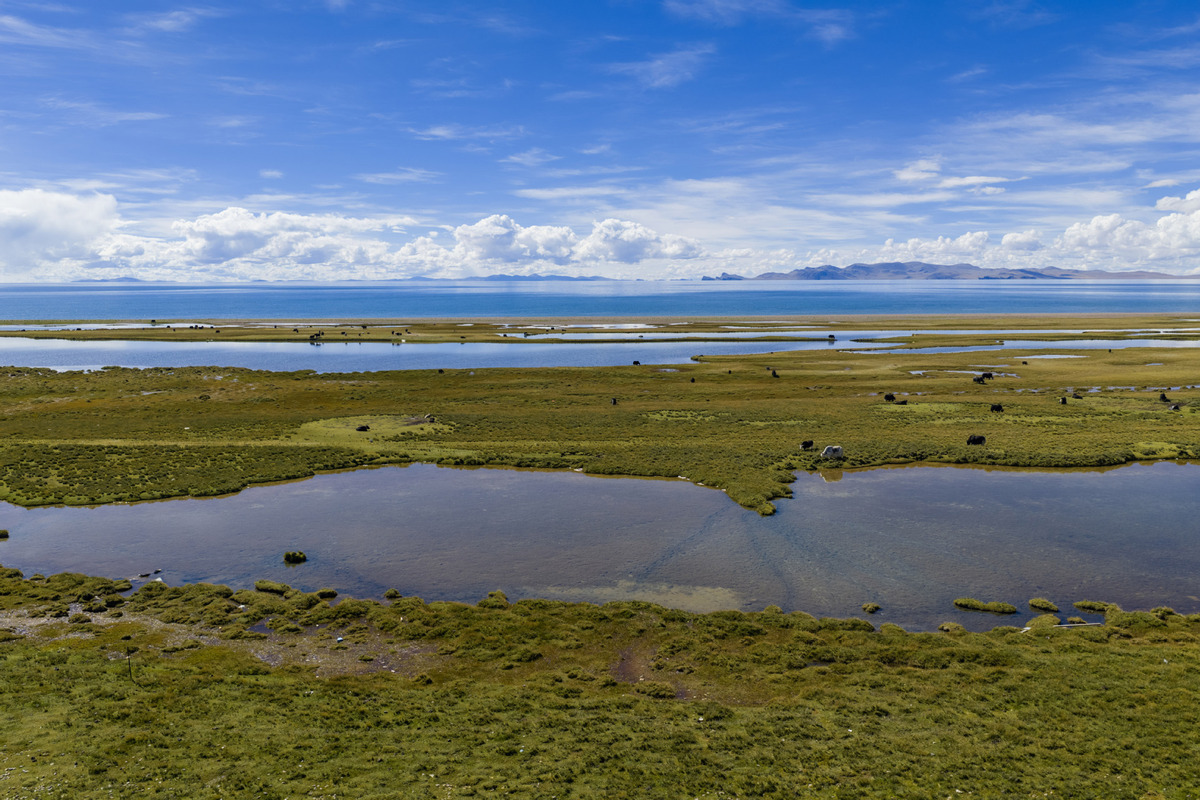Gyalze fireworks: a cautionary tale of greenwashing practices


A fireworks show, co-organized by a company and an artist, that was staged in Gyalze, Shigatse, in the Xizang autonomous region on Saturday, has rightly provoked a wave of public criticism. Marketed by the outdoor brand as an "artistic tribute to nature", pithe spectacle instead raised deep concerns about the ecological integrity of the Qinghai-Tibet Plateau. Far from being an act of reverence, the event revealed a troubling trend: the misuse of art as a cloak for commercial hype — a textbook case of greenwashing.
The plateau, often called the "roof of the world", is a vital ecological barrier and a sanctuary for a variety of species. It is also among the most fragile ecosystems on Earth. To set off explosives for a fleeting display of light and smoke was more than reckless; it was disrespectful to the very environment the show claimed to honor. The residue of chemicals, the bursts of noise, and the disruption to wildlife cannot be dismissed as trivial. Once ecological damage occurs in such vulnerable areas, restoration is extremely difficult, if not impossible.
That is why the key questions must be asked: why was this performance approved in the first place? Was any scientific assessment carried out? If not, the incident reflects not only poor judgment by the company and artist but also systemic loopholes in environmental oversight. The public deserves a reply. And if harm is proved to have been done, those responsible should not merely apologize, but also be held to account via penalties, compensation and concrete restoration measures. Only then can the incident serve as a real deterrent to others.
What stands out in this controversy is the distortion of artistic expression. True art reveres nature, elevates the human spirit and embodies truth, goodness and beauty. What happened in Gyalze was not art in this sense, but the commodification of nature — turning the vulnerability of the natural world into a marketing gimmick. Cloaking a publicity stunt in lofty rhetoric about "paying tribute to nature" insults both art and ecology.
Corporate actors must recognize that commercial logic has boundaries, especially in an ecological civilization. Marketing cannot come at the expense of environmental ethics. The Gyalze fireworks show is a vivid example of how attention-seeking under the guise of creativity can quickly backfire, eroding public trust and damaging brand credibility. Companies should learn that real value today lies not in pyrotechnic spectacles but in sustainable practices that genuinely respect the environment.
The local authority of Shigatse released a statement on early Sunday morning, saying that they had set up an investigation team that rushed to the scene, and will handle the matter in accordance with laws and regulations based on the results of its on-site investigation, according to an official statement.
Going forward, the lesson is clear: The authorities must strengthen governance by tightening approval procedures for artistic or commercial events in ecologically sensitive regions. No activity should proceed without rigorous scientific evaluation, and violations must carry serious consequences. At the same time, society should foster a healthier view of art — one that understands that the truest tribute to mountains, rivers and skies is not noisy fireworks but quiet protection.
The Gyalze incident is more than a local controversy; it is a wake-up call. Ecological ethics cannot be sacrificed for spectacle, and greenwashing disguised as art is neither acceptable nor sustainable. The fireworks have faded, but the accountability must not. What should remain is not only regret but resolve: to protect the fragile beauty of the plateau, to punish those who cross ecological red lines, and to ensure that art, commerce and nature coexist in harmony — not conflict.
































